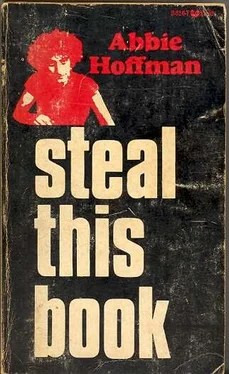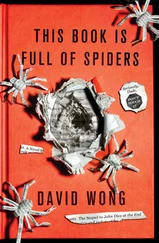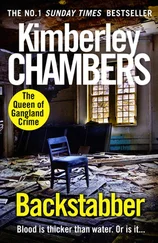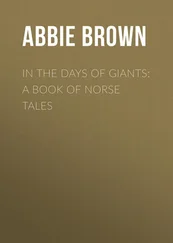First, you have to determine in what part of the country you want to live in terms of the climate you prefer and how far away from the major cities you wish to locate. The least populated states, such as Utah, Idaho, the Dakotas, Montana and the like, have the cheapest prices and the lowest tax rates. The more populated a state, and in turn, the closer to a city, the higher the commercial value of the land.
There are hundreds of different types of farms, so the next set of questions you’ll have to raise concerns the type of farm activity you’ll want to engage in. Cattle farms are different than vegetable farms or orchards. Farms come in sizes: from half an acre to ranches larger than the state of Connecticut. They will run in price from $30 to $3000 an acre, with the most expensive being prime farmland in fertile river valleys located close to an urban area. The further away from the city and the further up a hill, the cheaper the land gets. It also gets woodier, rockier and steeper, which means less tillable land.
If you are talking of living in a farm house and maybe having a small garden and some livestock for your own use, with perhaps a pond on the property, you are looking for what is called a recreational farm. When you buy a recreational farm, naturally you are interested in the house, barn, well, fences, chicken-coop, corrals, woodsheds and other physical structures on the property. Unless these are in unusually good condition or unique, they do not enter into the sale price as major factors. It is the land itself that is bought and sold.
Farmland is measured in acreage; an acre being slightly more than 43,560 square feet. The total area is measured in 40-acre plots. Thus, if a farmer or a real estate agent says he has a plot of land down the road, he means a 40-acre farm. Farms are generally measured this way, with an average recreational farm being 160 acres in size or an area covering about ½ square mile. A reasonable rate for recreational farmland 100 miles from a major city with good water and a livable house would be about $50 per acre. For a 160-acre farm, it would be $8,000, which is not an awful lot considering what you are getting. For an overall view, get the free catalogues and brochures provided by the United Farm Agency, 612 W. 47th St., Kansas City, Mo. 64112.
Now that you have a rough idea of where and what type of farm you want, you can begin to get more specific. Check out the classified section in the Sunday newspaper of the largest city near your desired location. Get the phone book and call or write to real estate agencies in the vicinity. Unlike the city, where there is a sellers’ market, rural estate agents collect their fee from the seller of the property, so you won’t have to worry about the agent’s fee.
When you have narrowed down the choices, the next thing you’ll want to look at is the plot book for the county. The plot book has all the farms in each township mapped out. lt also shows terrain variations, type of housing on the land, location of rivers, roads and a host of other pertinent information. Road accessibility, especially in the winter, is an important factor. If the farms bordering the one you have selected are abandoned or not in full use, then for all intents and purposes, you have more land than you are buying.
After doing all this, you are prepared to go look at the farm itself. Notice the condition of the auxiliary roads leading to the house. You’ll want an idea of what sections of the land are tillable. Make note of how many boulders you’ll have to clear to do some planting. Also note how many trees there are and to what extent the brush has to be cut down. Be sure and have a good idea of the insect problems you can expect. Mosquitoes or flies can bug the shit out of you. Feel the soil where you plan to have a garden and see how rich it is. If there are fruit trees, check their condition. Taste the water. Find out if hunters or tourists come through the land. Examine the house. The most important things are the basement and the roof. In the basement examine the beams for dry rot and termites. See how long it will be before the roof must be replaced. Next check the heating system, the electrical wiring and the plumbing. Then you’ll want to know about services such as schools, snow plowing, telephones, fire department and finally about your neighbors. If the house is beyond repair, you might still want the farm, especially if you are good at carpentry. Cabins, A-Frames, domes and tepees are all cheaply constructed with little experience. Get the materials from your nearest military installation.
Finally, check out the secondary structures on the land to see how usable they are. If there is a pond, you’ll want to see how deep it is for swimming. If there are streams, you’ll want to know about the fishing possibilities; and if large wooded areas, the hunting.
In negotiating the final sales agreement, you should employ a lawyer. You’ll also want to check out the possibility of negotiating a bank loan for the farm. Don’t forget that you have to pay taxes on the land, so inquire from the previous owner or agent as to the tax bill. Usually, you can count on paying about $50 annually per 40-acre plot.
Finally, check out the federal programs available in the area. If you can learn the ins and outs of the government programs, you can rip off plenty. The Feed-Grain Program of the Department of Agriculture pays you not to grow grain. The Cotton Subsidy Program pays you not to grow cotton. Also look into the Soil Bank Program of the United States Development Association and various Department of Forestry programs which pay you to plant trees. Between not planting cotton and planting trees, you should be able to manage.
The most complete list of city and country communes is available for $1.00 from Alternatives Foundation, Modern Utopian, 1526 Gravensteur Highway North, Sebastopol, California 95427. The phone is (707) 823-6168. The list is kept up to date. For all communes, you must write in advance if you plan to visit. Almost every commune will give you information about the local conditions and the problems they face if you write them a letter. Here is a list of some you might like to write to for more information. Avoid becoming a free-loader on your sisters and brothers.
• California
o ALTERNATIVES FOUNDATION-Box 1264, Berkeley, California 94709. (Dick Fairfield) Communal living, total sexuality, peak experience training centers. Dedicated to the cybernated-tribal society.
o BHODAN CENTER OF INQUIRY-Sierra Route, Oakhurst, California 93644. Phone (209) 683-4976.. (Charles Davis) Seminars on Human Community, IC development on the land, founded 1934, 13 members. Trial period for new members. Visitors check in advance.
• Colorado
o DROP CITY-Rt. 1, Box 125, Trinidad, Colorado 81082. Founded 1965. New members must meet specific criteria. Anarchist, artist, dome houses.
• New Mexico
o LAMA FOUNDATION-Box 444, San Cristobal, N.M.
• New York
o CITY ISLAND COMMUNE-284 City Island Avenue, Bronx, NY.
Visitors check in advance. Revolutionary.
o ATLANTIS I-RFD 5, Box 22A, Saugerties, NY 12477. Visitors and new members welcome.
• Oregon
o FAMILY OF MYSTIC ARTS—Box 546, Sunny Valley, Oregon
• Pennsylvania
o TANGUY HOMESTEADS-West Chester, Pennsylvania. Suburban, non-sectarian, co-op housing and community fellowship.
• Washington
o MAGIC MOUNTAIN-52nd and 19th Streets, Seattle, Washington.
(c/o Miriam Roder).
Usually when you ask somebody in college why they are there, they’ll tell you it’s to get an education. The truth of it is, they are there to get the degree so that they can get ahead in the rat race. Too many college radicals are two-timing punks.
Читать дальше












